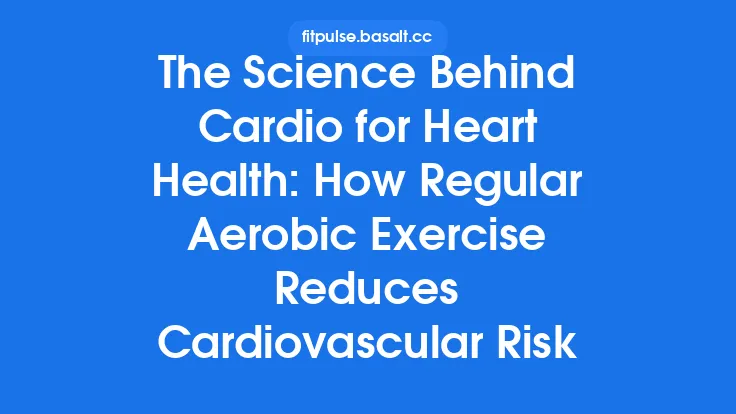The human body is a remarkable biochemical engine, capable of converting the chemical energy stored in nutrients into the mechanical work required for everything from a single finger tap to a marathon finish. This conversion does not rely on a single, monolithic process; instead, it is orchestrated by a suite of energy‑producing pathways that differ in speed, capacity, and dependence on oxygen. Understanding how these aerobic and anaerobic systems operate, how they interact, and what limits each of them is essential for anyone studying exercise physiology, designing training programs, or simply seeking a deeper appreciation of human performance.
The Fundamentals of Cellular Energy Production
At the cellular level, all forms of muscular work ultimately depend on adenosine triphosphate (ATP). ATP is the “energy currency” that powers cross‑bridge cycling in muscle fibers, ion transport across membranes, and virtually every other metabolic process. Because the intracellular ATP pool is limited—enough to sustain maximal contraction for only a few seconds—muscle cells must continuously regenerate ATP from other substrates.
Three primary biochemical routes replenish ATP:
- Phosphagen (Immediate) System – Utilizes stored high‑energy phosphates (creatine phosphate, CP) to rapidly donate a phosphate group to ADP, forming ATP. This reaction is catalyzed by creatine kinase and occurs without oxygen. It provides maximal power but is exhausted within 10–15 seconds of maximal effort.
- Anaerobic Glycolysis (Short‑Term) System – Breaks down glucose (or glycogen) to pyruvate, generating ATP at a moderate rate. In the absence of sufficient oxygen, pyruvate is reduced to lactate, allowing glycolysis to continue. This pathway can sustain effort for roughly 30 seconds to 2 minutes, depending on intensity.
- Aerobic Oxidative System (Long‑Term) System – Oxidizes carbohydrates, fats, and, to a lesser extent, proteins in the presence of oxygen within the mitochondria. This process yields the greatest amount of ATP per substrate molecule but proceeds more slowly, supporting prolonged, sub‑maximal activities.
The relative contribution of each system during any given exercise bout is dictated by the intensity (how hard) and duration (how long) of the effort, as well as the availability of substrates and oxygen.
Anaerobic Energy Pathways
1. Phosphagen System in Detail
- Substrate: Creatine phosphate (CP) and ADP.
- Key Enzyme: Creatine kinase.
- Reaction: CP + ADP → Creatine + ATP.
- Rate of ATP Production: Extremely rapid (≈ 100 mmol · kg⁻¹ · min⁻¹), providing the highest power output of any metabolic pathway.
- Duration: Typically 0–10 seconds of maximal effort (e.g., a 100‑m sprint start, a heavy lift).
- Recovery: CP stores are replenished primarily during low‑intensity periods when oxygen is plentiful; the resynthesis rate is about 70 % complete after 30 seconds of rest and near‑complete after 2–3 minutes.
2. Anaerobic Glycolysis
- Substrate: Cytosolic glucose derived from blood glucose or muscle glycogen.
- Key Enzymes: Hexokinase, phosphofructokinase‑1 (PFK‑1), pyruvate kinase.
- Net ATP Yield: 2 ATP per glucose molecule (plus the 2 ATP generated during the preparatory phase), for a total of 4 ATP per glucose, but the cost of converting glucose to glucose‑6‑phosphate must be considered, resulting in a net gain of 2 ATP.
- By‑product: Lactate (and accompanying H⁺ ions). Lactate formation regenerates NAD⁺, allowing glycolysis to continue in the absence of sufficient oxygen.
- Rate of ATP Production: Faster than aerobic oxidation but slower than the phosphagen system (≈ 30–50 mmol · kg⁻¹ · min⁻¹).
- Duration: Supports high‑intensity efforts lasting roughly 30 seconds to 2 minutes (e.g., a 400‑m sprint, repeated high‑intensity intervals).
- Recovery: Lactate is cleared from the muscle and blood via oxidation in the mitochondria, gluconeogenesis in the liver (Cori cycle), or conversion back to pyruvate for further oxidation when oxygen becomes available.
Aerobic Energy Pathway
1. Oxidative Phosphorylation Overview
- Substrates: Primarily carbohydrate (glucose) and fatty acids; protein contributes minimally under most exercise conditions.
- Location: Mitochondrial matrix (β‑oxidation of fatty acids, citric acid cycle) and inner mitochondrial membrane (electron transport chain, ETC).
- Key Steps:
- Glycolysis (cytosol) → pyruvate → acetyl‑CoA.
- β‑Oxidation (mitochondrial matrix) → acetyl‑CoA from fatty acids.
- Citric Acid Cycle → NADH and FADH₂.
- Electron Transport Chain → oxidative phosphorylation, producing the bulk of ATP.
- ATP Yield: Approximately 30–32 ATP per glucose molecule and up to 100–120 ATP per fatty acid molecule (e.g., palmitate yields ~ 106 ATP).
- Rate of ATP Production: Slower than anaerobic pathways (≈ 5–10 mmol · kg⁻¹ · min⁻¹ at moderate intensities) but capable of sustaining activity for hours.
- Oxygen Dependency: Oxygen serves as the final electron acceptor in the ETC, forming water. The availability of oxygen in the blood and its delivery to mitochondria are the primary limiting factors for aerobic ATP production.
- Duration: Dominates energy provision for activities lasting > 2–3 minutes (e.g., distance running, cycling, swimming, prolonged resistance work at moderate loads).
2. Substrate Preference Shifts
While the article avoids deep discussion of “fueling strategies,” it is still relevant to note that the aerobic system can oxidize both carbohydrate and fat simultaneously. At lower intensities, a larger proportion of ATP derives from fatty acid oxidation; as intensity rises, carbohydrate oxidation becomes increasingly dominant because glycolysis can supply pyruvate to the mitochondria more rapidly than fatty acids can be mobilized and oxidized.
Comparative Overview: When Each System Dominates
| Intensity (Relative to VO₂max) | Primary Energy System | Typical Duration | Key Metabolic Signature |
|---|---|---|---|
| > 90 % (all‑out sprint) | Phosphagen | 0–10 s | Rapid CP depletion, high ADP, negligible lactate |
| 70–90 % | Anaerobic Glycolysis | 10 s–2 min | Rising lactate, moderate pH drop, high glycolytic flux |
| 40–70 % | Mixed (Glycolysis + Oxidative) | 2–10 min | Moderate lactate, increasing oxygen consumption |
| < 40 % | Aerobic Oxidative | > 10 min | Low lactate, stable pH, high mitochondrial oxygen utilization |
The transition between systems is not abrupt; rather, there is a smooth continuum where contributions overlap. For example, during a 800‑m run, the phosphagen system supplies the initial burst, anaerobic glycolysis dominates the middle portion, and aerobic oxidation contributes throughout, increasingly so as the race progresses.
Physiological Indicators of System Utilization
- Oxygen Uptake (VO₂): Directly reflects aerobic metabolism. A rapid rise in VO₂ after exercise onset (the “oxygen uptake kinetics”) indicates how quickly the aerobic system can meet demand.
- Blood Lactate Concentration: Elevated lactate (> 4 mmol · L⁻¹) signals a substantial reliance on anaerobic glycolysis. However, lactate also serves as a substrate for the aerobic system once oxygen becomes sufficient.
- Respiratory Exchange Ratio (RER): The ratio of CO₂ produced to O₂ consumed. Values near 1.0 suggest predominant carbohydrate oxidation (often accompanying higher anaerobic contribution), whereas values around 0.7 indicate greater fat oxidation (a hallmark of low‑intensity aerobic work).
- Phosphocreatine Recovery Kinetics: Measured via magnetic resonance spectroscopy (MRS) or inferred from post‑exercise phosphocreatine resynthesis rates, this metric reflects the capacity of the phosphagen system and the efficiency of mitochondrial oxidative phosphorylation.
- Heart Rate and Perceived Exertion: While indirect, these markers correlate with the overall metabolic demand and can be used to estimate the relative contribution of aerobic versus anaerobic pathways during field testing.
Practical Implications for Exercise Planning
- Designing Sessions by Energy System:
- Phosphagen‑focused workouts involve maximal effort bouts of ≤ 10 seconds (e.g., heavy single‑rep lifts, short sprints) with ample rest (≥ 2 minutes) to allow CP repletion.
- Anaerobic glycolytic sessions use high‑intensity intervals lasting 30 seconds to 2 minutes, with rest intervals that are short enough to limit full aerobic recovery (e.g., 1:1 or 1:2 work‑to‑rest ratios).
- Aerobic training emphasizes continuous activity at moderate intensity for ≥ 20 minutes, allowing the oxidative system to dominate.
- Balancing Energy System Development: A well‑rounded program incorporates stimuli for each pathway, ensuring that athletes possess the rapid power of the phosphagen system, the high‑intensity capacity of glycolysis, and the endurance of oxidative metabolism.
- Monitoring Progress: Repeated measurement of the physiological indicators listed above (e.g., lactate after a set interval, VO₂ kinetics during a submaximal test) can track adaptations within each system without delving into training‑specific adaptations that belong to other articles.
- Recovery Considerations: Although detailed recovery mechanisms are covered elsewhere, it is worth noting that the clearance of lactate and the resynthesis of CP are both oxygen‑dependent processes. Ensuring adequate low‑intensity active recovery or passive rest between high‑intensity bouts facilitates the rapid restoration of anaerobic capacity.
Common Misconceptions
- “Lactate is waste.”
Lactate is a legitimate metabolic intermediate. Its formation allows glycolysis to continue under low‑oxygen conditions, and it can be oxidized by the heart, slow‑twitch muscle fibers, and the liver. The notion of lactate as a mere by‑product of “bad” metabolism is outdated.
- “Aerobic training eliminates the need for anaerobic work.”
Even elite endurance athletes rely on anaerobic glycolysis during surges, hill climbs, or sprint finishes. The aerobic system provides the base, but the anaerobic pathways supply the extra power when intensity spikes.
- “Fat can’t be used during high‑intensity exercise.”
While fatty acid oxidation is slower, it still contributes to ATP production at moderate‑to‑high intensities, especially when carbohydrate stores are limited. The proportion shifts, but fat oxidation never ceases entirely.
- “The phosphagen system is only for weightlifters.”
Any activity requiring maximal force in a very short time—whether a sprinter’s start, a basketball player’s jump, or a swimmer’s dive—depends heavily on CP stores.
Summary
The body’s energy systems are a coordinated trio of biochemical pathways that differ in speed, capacity, and oxygen dependence:
- The phosphagen system delivers instantaneous power for ≤ 10 seconds, relying on stored creatine phosphate.
- Anaerobic glycolysis bridges the gap, providing rapid ATP for 30 seconds to 2 minutes through glucose breakdown and lactate production.
- The aerobic oxidative system sustains prolonged activity by oxidizing carbohydrates and fats within mitochondria, a process limited by oxygen delivery.
Understanding the characteristics, indicators, and practical applications of each system equips exercise scientists, coaches, and athletes with the knowledge to design balanced training programs, interpret performance data, and appreciate the elegant metabolic choreography that underlies every movement. By recognizing when each pathway dominates and how they interact, we gain a clearer picture of human performance—one that remains relevant across sports, fitness levels, and research contexts.





